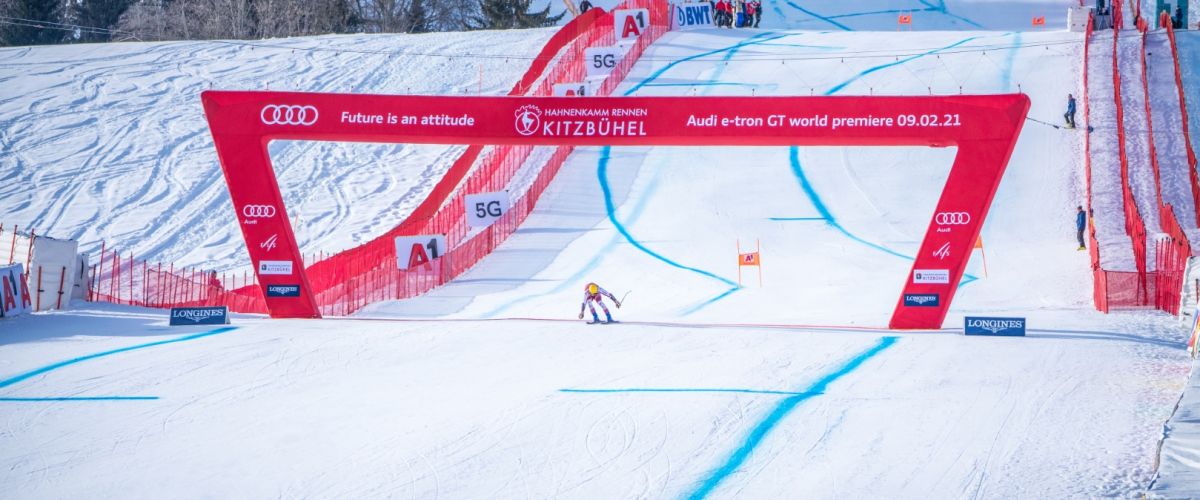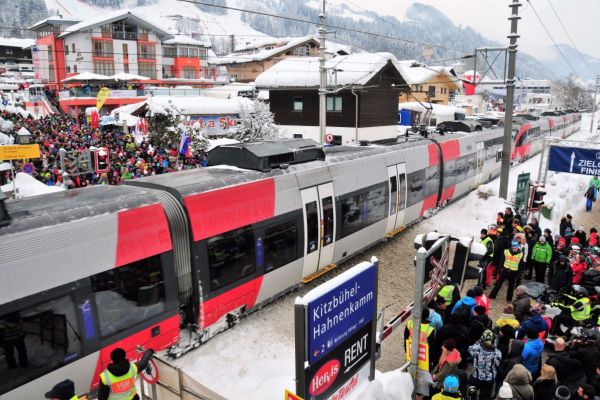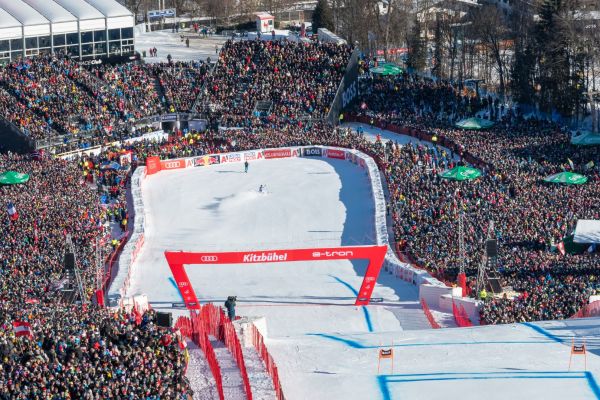Super-Gs, Double Downhillers and Hahnenkamm Winners
It didn't take long for the Super-G on Friday of the Hahnenkamm weekend to establish itself as a worthy prologue to the "main" Downhill event. That said, the relationship between Kitzbühel and the Super-G was initially somewhat reserved. A Super-G was held on the Hahnenkamm for the first time in 1995, when the race served as a substitute for Flachau. It was not until 2000 - 18 years after its premiere in the World Cup - that the Super-G finally became a firm fixture in the Hahnenkamm race programme - to the delight, not only, of Hermann Maier, who won 5 of the first 7 Hahnenkamm Super-Gs.
22 years and 20 Super-G events after its official inclusion in the race programme - the 2007 and 2012 races were cancelled due to weather conditions - the speed discipline is now taking a provisional three-year break from Kitzbühel. This move was initiated in 2021 when Kitzbühel stepped in at the last minute to host the Wengen Downhill. While the Ganslern Slalom was held in Flachau for corona related reasons, there was a three-day speed festival in Kitzbühel with two Downhill races and a Super-G. With Beat Feuz's double Downhill victory, Switzerland indirectly reclaimed "its" Downhill, but the enthusiasm to stage two Downhill races persevered in Kitzbühel: two days, two races on the same course with the same course setting. All that changes is the weather and the skiers' form on the day. A victory on the Streif is already reserved for the best, but can anyone pull off the double? This possibility adds yet another thrilling element for spectators and makes coverage more exciting and varied.
A look at the history books shows that the concept of a double Downhill in Kitzbühel is not new. Since the beginning of the Hahnenkamm Races, 19 double Downhill races have taken place, 13 of them as World Cup events between the years 1972 and 2004 - many of them as substitutes for other venues. There is much more in favour of two Downhill races on the same course, than just the spontaneous substitution for other organisers and the question of whether an athlete will be able to pull off a double victory. From the athletes‘ perspective, starting from the Hahnenkamm is ideal, as they get to enjoy the modern infrastructure surrounding the new Starthaus more than once. While the Super-G start area is located beneath the Seidlalmkopf and thus in the middle of the mountain and not close to the lift, the Starthaus can be reached directly with the Hahnenkamm cable car. Furthermore, the area around the Super-G start is very narrow and does not meet the quality standard that Kitzbühel Ski Club would like to provide as Organiser.
The blue colour lines, which help skiers visualise the terrain of the course, has the disadvantage that it softens the surface of the race piste somewhat. Thus, the mostly opposing course setting of the Super-G on Friday resulted in weak points in the Downhill section, sometimes in the very decisive areas of where skiers initiate their turns. If two Downhill races are held on the same course with the same course setting, the quality of the slope is assured for all race days.
For the spectators, a double Downhill also offers a very decisive advantage: It gives them two opportunities to experience the Downhill live. Due to the corona-related limit on the number of spectators, Kitzbühel Ski Club expects tickets to be sold out on Saturday. Thanks to a second Downhill on Friday, anyone who cannot get hold of tickets for Saturday may still enjoy the same sports programme.
From the Organiser's point of view, one very important point speaks in favour of two Downhills: programme flexibility. While in speed disciplines, the weather has to be good along the entire racecourse, a Slalom – like in 2022 – can also take place in extremely wintry conditions. In recent years, adverse weather meant that the programme needed to be changed repeatedly in order to accommodate all the races. However, moving a race to another day at short notice is only possible if there is enough time to make the necessary adaptations – a particular challenge on the mountain when the weather is critical. If two Downhill runs and a Slalom take place, racecourses and infrastructure are independent of each other and events can be rescheduled as required within the Friday to Sunday timeframe.
In addition to all the advantages of a double Downhill, there is another important question: Who will be the Hahnenkamm winner? Traditionally, the Hahnenkamm winner was the athlete, who won the combination of Downhill and Slalom. Since the abolition of this classification in 2017, everyone who wins one of the Hahnenkamm races is a Hahnenkamm winner - whether Downhill, Slalom or Super-G. With two Downhills and one Slalom Race in 2023 there will also be three Hahnenkamm winners. It doesn't matter whether it's the Kitzbühel Downhill, the Hahnenkamm Downhill or the Hahnenkamm Slalom. The names only serve the purpose of easier distinction.
Photo © K.S.C./floobe



